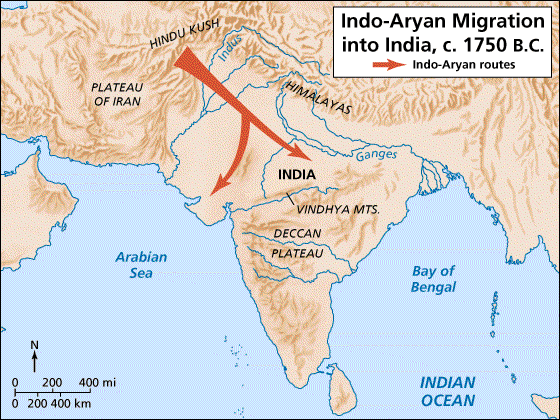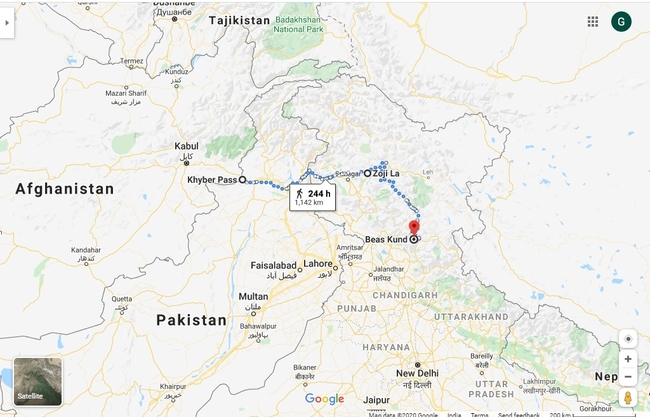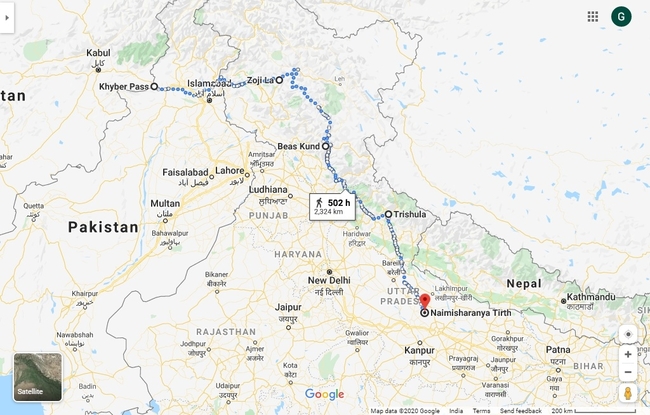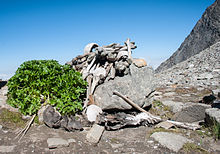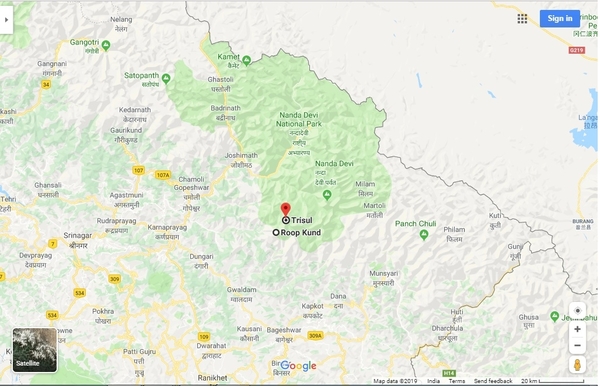
| POSSIBLE MIGRATION ROOT - 1 Possible Migration Root - 1 of Vyas Family of Gautam / Gaudumu Lineage :
This is just an assumption of our Vyas Family route from Khyber Pass to Siddhpur.
Khyber Pass - Zojila Pass - Beas Kund
Khyber Pass - Zojila Pass - Beas Kund - Trishula
Khyber Pass - Zojila Pass - Beas Kund - Trishula - Naimisharanya
Khyber Pass - Zojila Pass - Beas Kund - Trishula - Naimisharanya - Siddhpur Roopkund (locally known as Mystery Lake, Skeletons Lake) is a high altitude glacial lake in the Uttarakhand state of India. It lies in the lap of Trishul massif. Located in the Himalayas, the area around the lake is uninhabited, and is roughly at an altitude of 16,470 feet (5,020 m), surrounded by rock-strewn glaciers and snow-clad mountains. Roopkund is a popular trekking destination.
With a depth of about two metres, Roopokund is widely known for the hundreds of ancient human skeletons found at the edge of the lake. The human skeletal remains are visible at its bottom when the snow melts. Research generally points to a semi-legendary event where a group of people were killed in a sudden, violent hailstorm in the 9th century. Because of the human remains, the lake has been called Skeleton Lake in recent times.
Human skeletons in Roopkund Lake Skeletons were rediscovered in 1942 by Nanda Devi game reserve ranger Hari Kishan Madhwal, although there are reports about these bones from the late-19th century. At first, British authorities feared that the skeletons represented casualties of a hidden Japanese invasion force, but it was found that the skeletons were far too old to be Japanese soldiers. The skeletons are visible in the clear water of the shallow lake during a one-month period when the ice melts. Along with the skeletons, wooden artifacts, iron spearheads, leather slippers, and rings were also found. When a team from National Geographic magazine retrieved about 30 skeletons, flesh was still attached to some of them. Geneticists Niraj Rai and Manvendra Singh at the Center for Cellular and Molecular Biology at Hyderabad conducted DNA tests on a hundred samples from the lake and compared them to the current Indian population. Results indicated that 70 percent of them had an affinity with Iran, while the remaining ones belonged to the local population. It is hypothesized that the Iran group took the help of local porters to seek new land for settlement. Later studies placed the time of mass death around the 9th century CE (1,200 years old).
Local legend says that the King of Kanauj, Raja Jasdhaval, with his pregnant wife, Rani Balampa, their servants, a dance troupe and others went on a pilgrimage to Nanda Devi shrine, and the group faced a storm with large hailstones, from which the entire party perished near Roopkund Lake.
Remnants belonging to more than 300 people have been found. Radiocarbon dating of the bones at Oxford University's Radiocarbon Accelerator Unit determined the time period to be 850 CE ±30 years. The Anthropological Survey of India conducted a study of the skeletons during the 1950s and some samples are displayed at the Anthropological Survey of India Museum, Dehradun.
More recently, radiocarbon dating found that the remains are from very different eras. All of the remains with South Asian ancestry were dated to around 800 CE, while the other skeletal remains analyzed were dated to around 1800 CE. “These findings refute previous suggestions that the skeletons of Roopkund Lake were deposited in a single catastrophic event,” the scientists explain, in Nature Communications.
Identification :
Genome-wide DNA study of skeletons from Roopkund by Harney et al. 2018 revealed that the skeletons belonged to two distinct groups; one group is composed of individuals with broadly South-Asian related ancestry from 9th CE, and the second group is composed of individuals from 200 years ago with genetic affinity with east Mediterraneans.
The studies of the skeletons revealed a common cause of death: blows to the back of the head, caused by round objects falling from above. The researchers concluded that the victims had been caught in a sudden hailstorm, just as described in the local legends and songs.
In a study published in August 2019, the DNA extracted from 38 skeletons was analyzed and revealed that many different populations experienced mortal incidents at the lake, separated in time by approximately 1,000 years and one that occurred as late as the 19th century. These findings refute previous suggestions that the skeletons of Roopkund Lake were deposited in a single catastrophic event.
Conservation concerns :
There is a growing concern about the regular loss of skeletons and it is feared that, if steps are not taken to conserve them, the skeletons may gradually vanish in the years to come. It is reported that tourists visiting the area are in the habit of taking back the bones in large numbers and the district administration has expressed the need to protect the area. The district magistrate of Chamoli District has reported that tourists, trekkers, and curious researchers are transporting the skeletons on mules and recommended that the area should be protected. Governmental agencies have made efforts to develop the area as an eco-tourism destination in an effort to protect the skeletons.
Trishul Massif :
Trishul Massif The three peaks are named Trisul I, Trisul II, and Trisul III. The massif is a north-south ridge, with Trisul I at the north end and Trisul III at the south. The massif runs roughly North-South, and hence appears compressed when viewed from the south (Ranikhet, Kausani), and more stretched out from the Southeast (Chamoli, Bedini Bugyal).
Nanda Ghunti lies a few kilometers to the northwest, while Mrigthuni is just to the southeast.
Trisul and Roop Kund |
|||||||||||||||||||||||||||||||||
